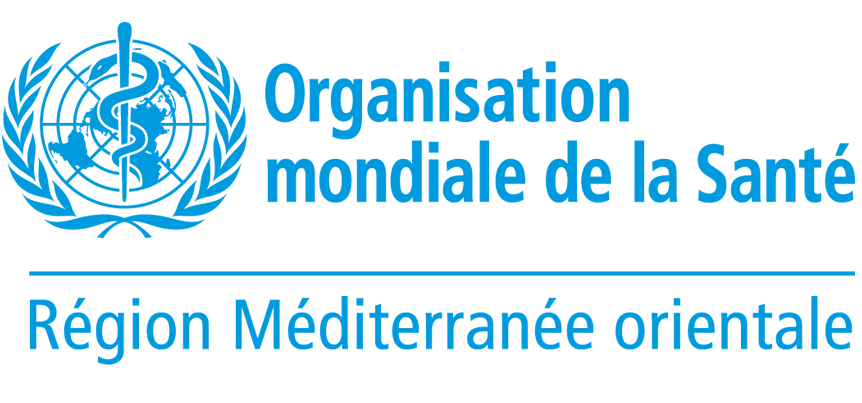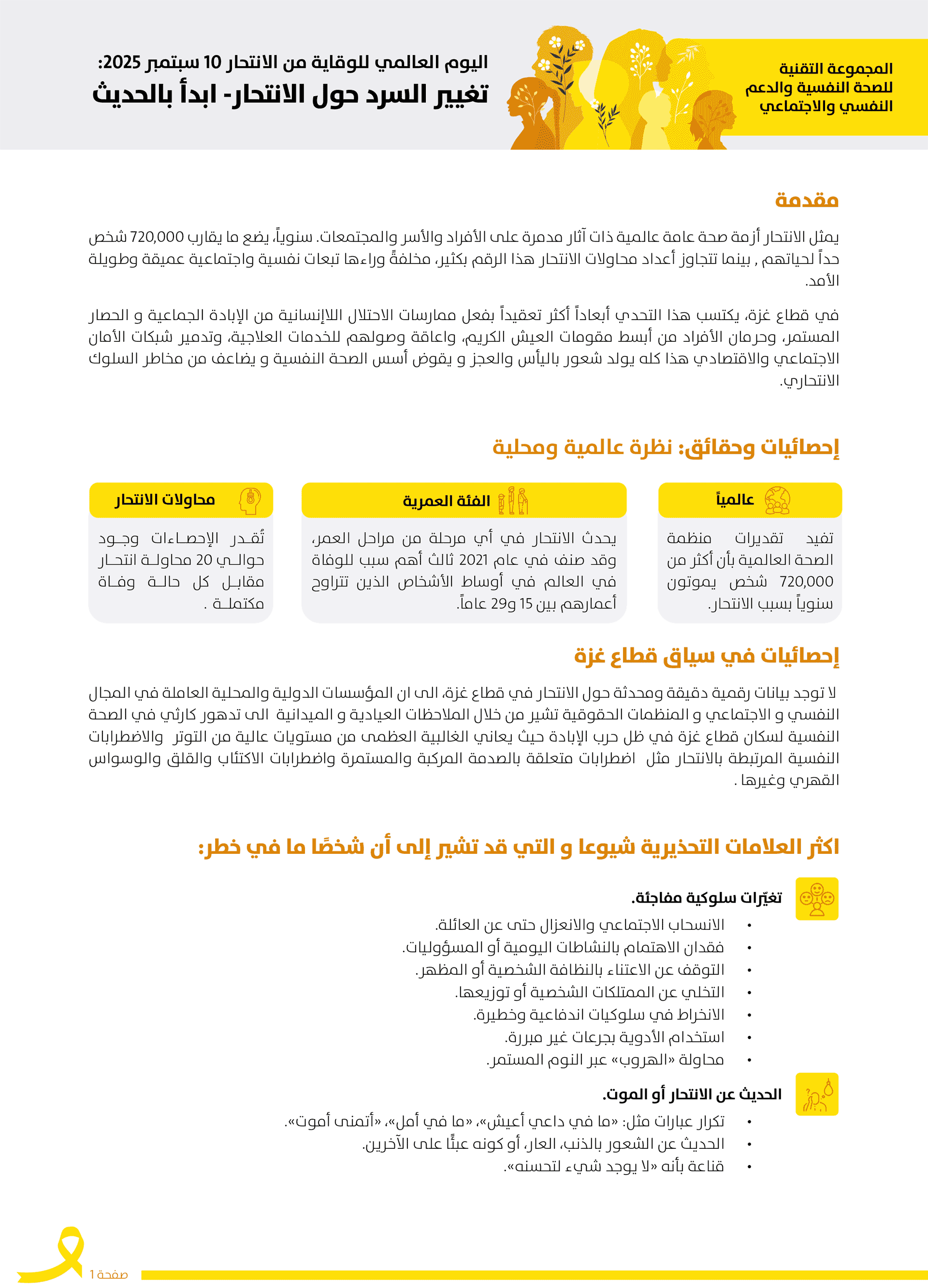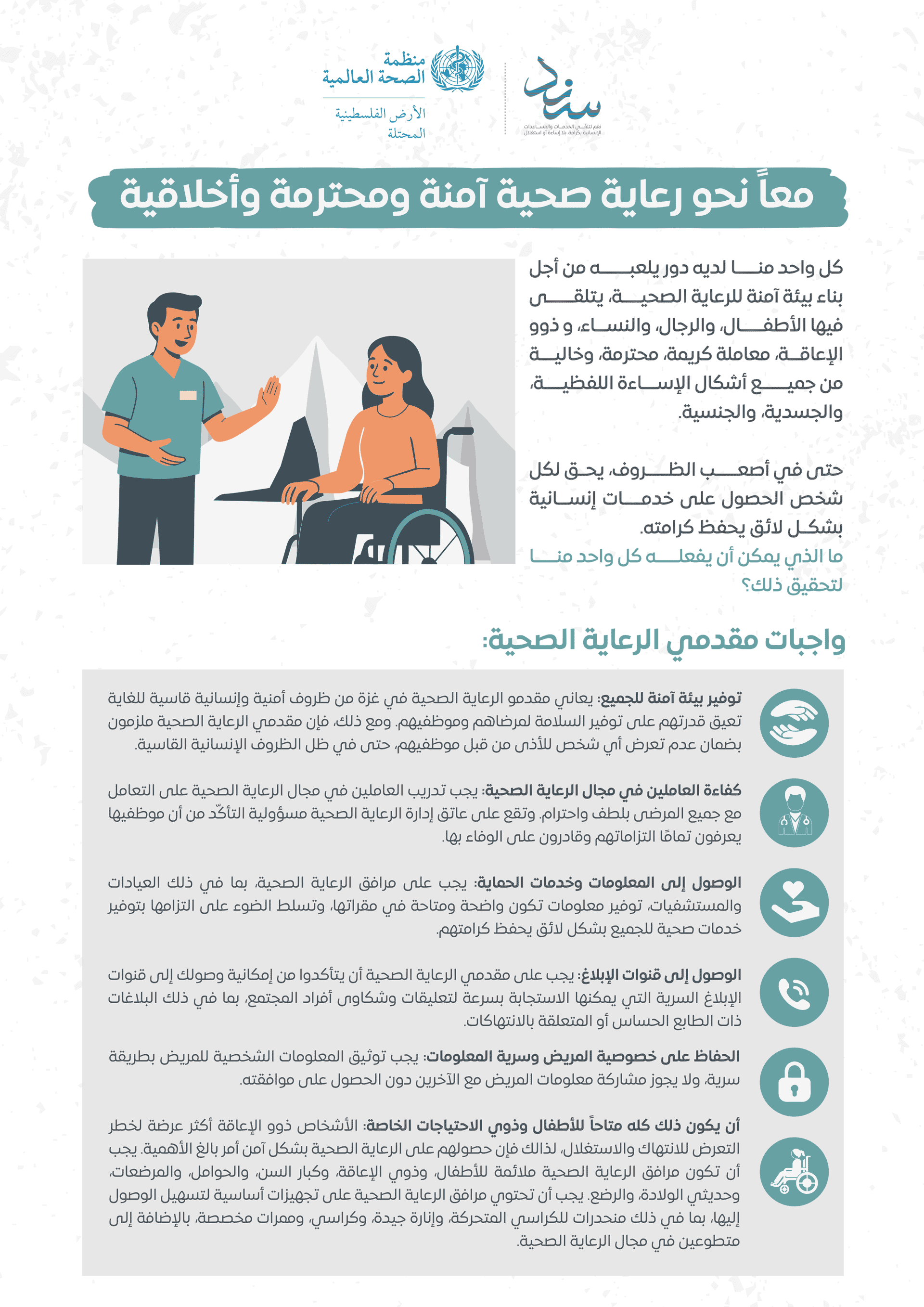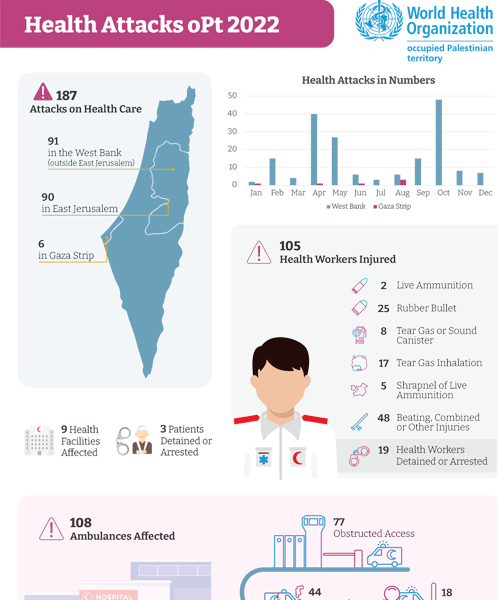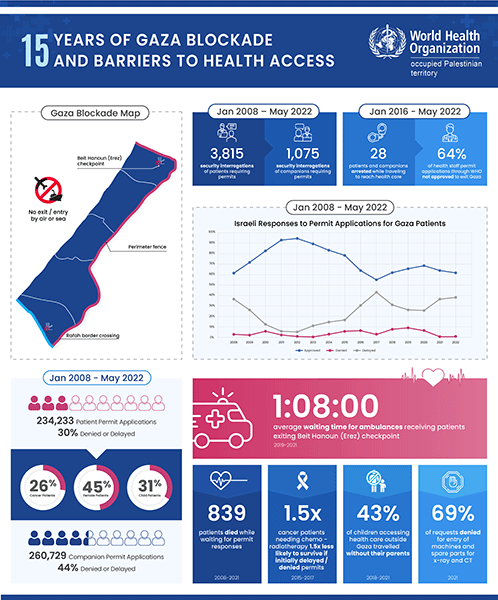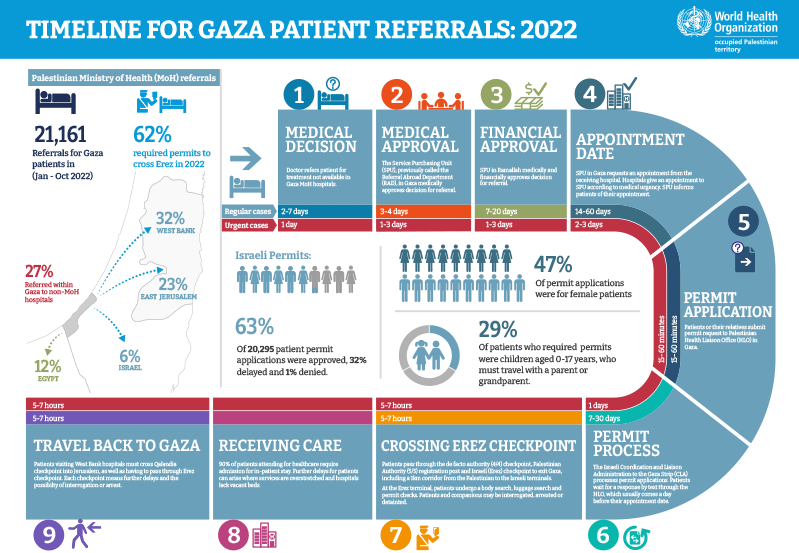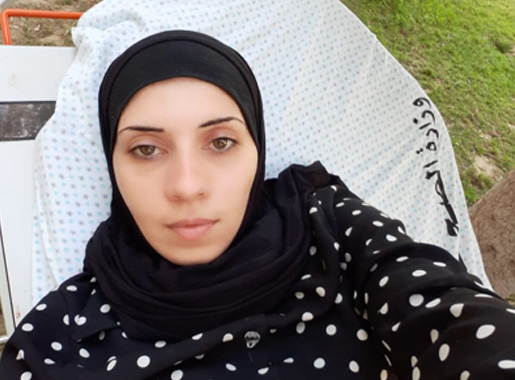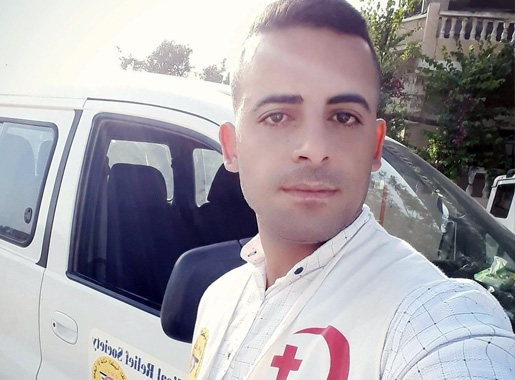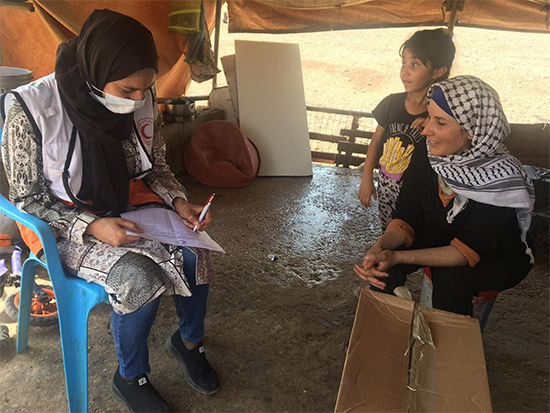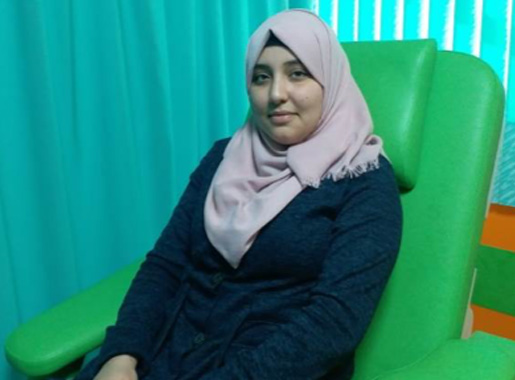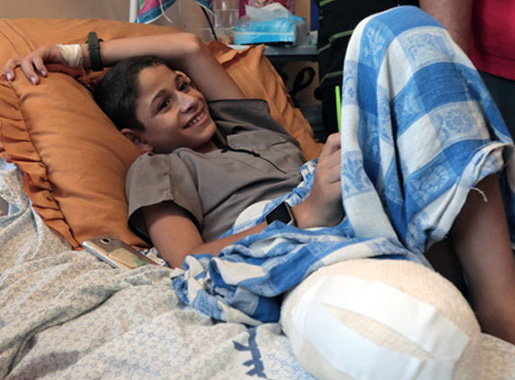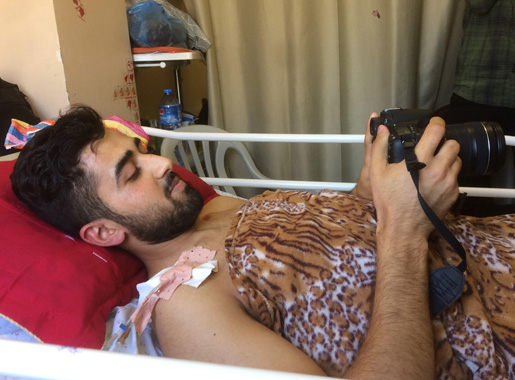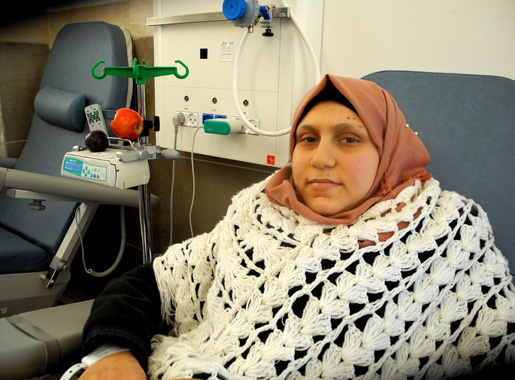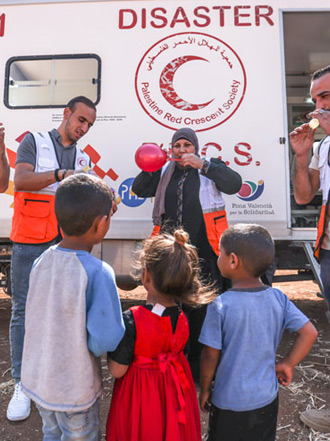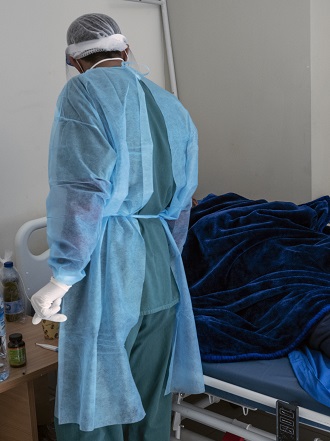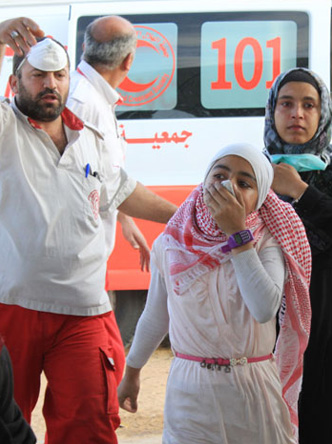Mental Health and Psychosocial Support (MHPSS) and Preventing and Responding to Sexual Exploitation, Abuse and Harassment (PRSEAH)
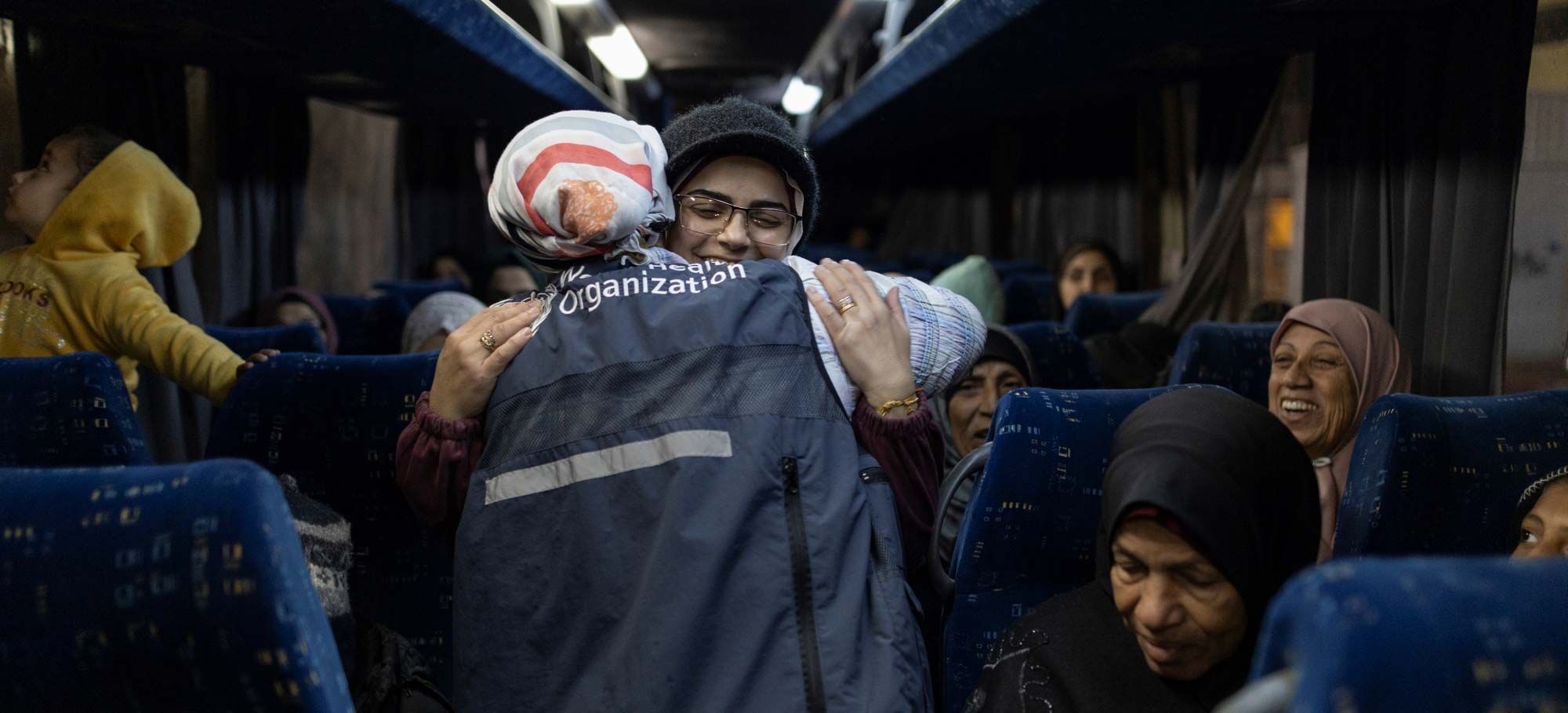
Mental health in Gaza has been a critical concern long before the ongoing conflict. Over 16 years of blockade and repeated escalations in violence had already fueled a growing crisis, but the situation over the past two years has deteriorated dramati-cally. Constant attacks on the entire population, repeated displacement, famine in parts of Gaza, the spread of disease, the loss of livelihoods, loved ones, and any sense of safety have pushed mental health needs to alarming levels, affecting everyone.
Gaza Hostilities 2023 / 2024 - Emergency Situation Reports
In the occupied Palestinian territory, where a 16-year blockade has left the Gaza Strip’s health system severely under-resourced, escalating hostilities with Israel that began on 7 October 2023 are compounding an already dire situation. Power outages and shortages of medicines and health supplies in Gaza Strip hospitals are hindering the delivery of life-saving medical care. Attacks on health care have been recorded by WHO, resulting in deaths and injuries of health workers and affecting health facilities and ambulances. As the situation evolves, there is an urgent need to establish a humanitarian corridor for unimpeded, life-saving patient referrals and movement of humanitarian personnel and essential health supplies.
Gaza emergency situation reports
Polio in the Gaza Strip
Gaza Polio campaign: October 2024-phase II
Download the outbreak response summary
Gaza Polio campaign: September 2024-phase I
Right to Health: Barriers to health and attacks on health care in the occupied Palestinian territory

This report is produced as part of WHO’s Right to Health programme in the occupied Palestinian territory, which focuses on monitoring and documentation of barriers to the right to health for Palestinians; capacity-building for strengthening the right to health and a human rights-based approach to health; as well as advocacy towards ending barriers and violations of the right to health. The purpose of the report is to provide analysis of data collected through monitoring, to support evidence-based advocacy to strengthen respect, protection, and fulfilment of the right to health in the occupied Palestinian territory.
The data and analysis included in the report builds on previous annual reporting (see more recent years: 2018, 2017, 2016, 2014–2015); WHO monthly access reporting; and WHO health attacks monitoring. Further information resources for the right to health produced by WHO in the occupied Palestinian territory can be found online.
This report specifically analyses data on barriers to the right to health for Palestinians in the West Bank, including east Jerusalem, and the Gaza Strip for 2019 to 2021, with additional retrospective analyses to demonstrate longer-term trends and structural limitations. It focuses on:
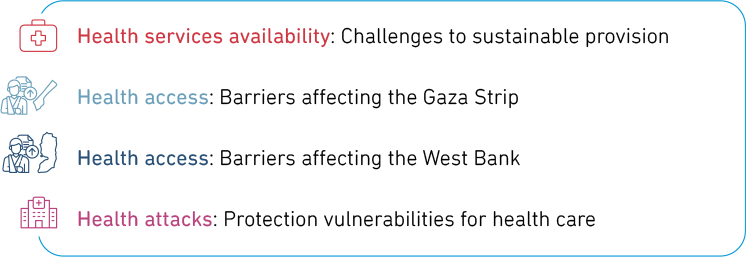
Palestinian Voices 2022-2023
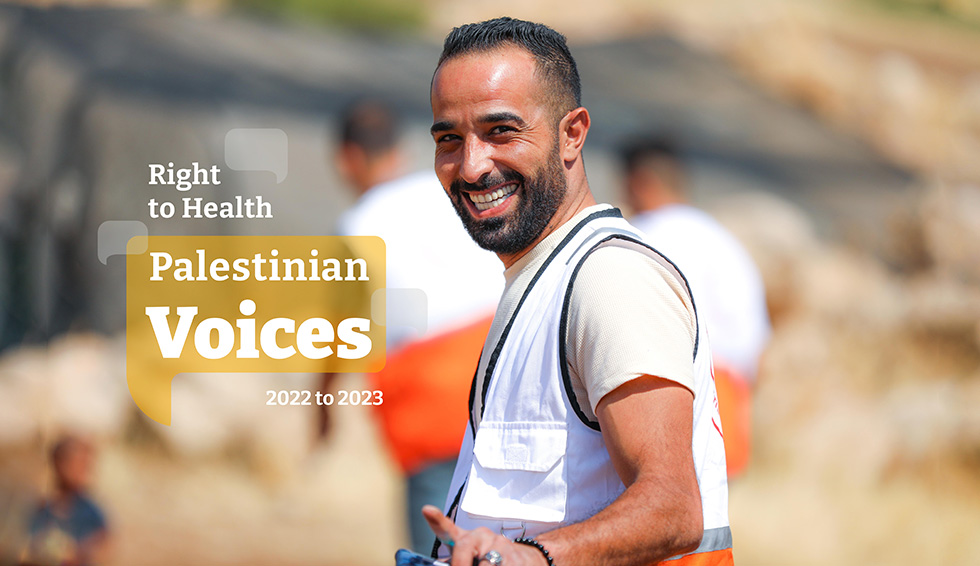
WHO continues to document attacks on health care and the impact of barriers to health access on the Palestinian people in Gaza and the West Bank and attacks on health care.
Palestinian voices 2022-2023 highlights some of the cases documented.
Videos
Zaina, 10, unable to access cancer treatment
February 2022
Zaina is a 10-year-old girl from the Gaza Strip, who was diagnosed with Hodgkin’s lymphoma in June 2020.
After her initial diagnosis, Zaina received chemotherapy at Rantisi Hospital in the Gaza Strip. It was a difficult time for Zaina and her family.
Gaza child dies following repeated permit delays by Israel
March 2022
Fatma Al-Masri was a 19-month-old girl from Khan Younis in the Gaza Strip. She died on 25 March 2022 after she was delayed access to lifesaving cardiac surgery for nearly three months. Fatma was born with a congenital heart condition known as an atrial septal defect. She needed curative surgery at Makassed Hospital in East Jerusalem and was required by Israel to obtain a permit to reach her hospital appointment.
Ameer, had cancer in his eyes. Now he needs treatment
July 2021
Three-year-old Ameer is a refugee living in Khan Younis in the south of the Gaza Strip. In August 2019, he was diagnosed with a cancer in his right eye called a retinoblastoma. He had surgery outside the Gaza Strip at the time to remove the cancer, and received an ocular prosthesis – a custom-made ball that fits the socket to keep the shape of the eye. In January 2020, the cancer was found to have spread to Ameer’s left eye, and he had further surgery.
“I’m a photographer, so my work depends on my sight.”
August 2021
Tamer is a 39-year-old photojournalist from Rafah in the south of the Gaza Strip, working for the Associated Press (AP). His sight has been deteriorating since he was diagnosed with a congenital eye condition in 2017. Tamer has required extensive treatments and investigations, not all available in the Gaza Strip.
Health Attacks Against PRCS - May and June 2022
May 2022
Khalid needs to exit Gaza so he can continue lifesaving dialysis
March 2022
More resources
Confirmation
Thank You!
Your query has been received.
Right to health report
PRCS driver testimony of an attack in Beit Furik, Nablus
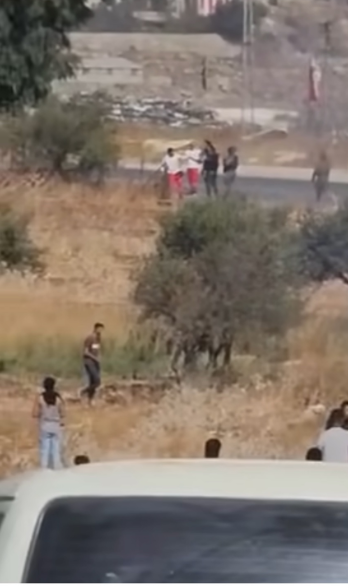 On 2 October 2022, a Palestine Red Crescent Society (PRCS) ambulance crew travelled to Beit Furik near Nablus, to provide first aid to persons injured during demonstrations against settlement expansion and incursions in the village, which is in the north of the West Bank.
On 2 October 2022, a Palestine Red Crescent Society (PRCS) ambulance crew travelled to Beit Furik near Nablus, to provide first aid to persons injured during demonstrations against settlement expansion and incursions in the village, which is in the north of the West Bank.
Ali was driving the ambulance, while his colleague Omar1 sat beside him. They crossed the checkpoint leading to Beit Furik without obstruction. However, as the ambulance approached the entrance to the village the crew was confronted with a temporary (flying) checkpoint comprising Israeli soldiers and border guards.
“The soldiers aimed their guns towards us and were shouting at us, ordering us
to stop,” said Ali, the driver. “I was driving very slowly, as we are used to doing in situations like this, and stopped behind one of the military jeeps. A soldier came to the window and told me to turn the engine off and give him the keys. He was banging at the window with the back of his gun. I tried
to explain that we had information that there were people injured and we needed to reach them.”
“After switching off the engine, the soldiers insisted on searching the vehicle. I offered to go to the back of the vehicle with the soldier to open the ambulance for him, but he refused. We are used to going with the soldiers to open the door. They usually want us to be in front of them when they search a vehicle, but this soldier insisted on going alone. Because of this, I was afraid he might try to plant a weapon or a knife on the vehicle and make an accusation against us. I wanted to see what he was doing, but another soldier stood by my door, aiming his weapon at me and preventing me from leaving the vehicle or seeing behind.”
“The ambulance vehicle automatically locked when the soldier tried to open it. He then shouted towards me ordering me to open the backdoor, which I did. I left the ambulance and went towards the backdoor. At this point the soldier shouted at me again, asking why I was there. When I responded that I wanted to see what he was doing, the soldier got out of the vehicle and started pushing me and kicking me, hitting me with the back of his gun and causing me to fall to the ground.”
“Omar came out of the vehicle and tried to help me. Another soldier beside the ambulance came and started pushing Omar, while a further 3 soldiers joined and were surrounding us and pushing us away from the ambulance.”
At the point that Ali and Omar had been pushed away from the vehicle, someone in the nearby demonstration began recording what was happening in a video on their phone. The video shows the soldiers pushing, kicking and beating the paramedics before they are both made to kneel on the ground.
“When we were on the ground, someone was trying to call me. I answered the call on speaker so that the person on the line would know we were in danger. That person contacted the Palestinian Coordination Office, who arrived on site shortly afterwards. Following negotiation, we were released. Another ambulance came to take Omar to hospital for treatment, while I provided information to the officer from the Coordination Office. I then drove myself to hospital.”
As a result of the attack, Ali sustained injuries to his leg including tear of a cartilage in his knee, requiring treatment for the pain and physiotherapy. He returned to work after 40 days.
“Even after my injury, I will go back to the field. Even if it means that something can happen to me, this is our duty. We were raised this way; this is who we are. It’s not the first time I was exposed to violence from soldiers. I worked during the Second Intifada, when we were fired at with live ammunition. We had a female patient in the ambulance at the time. The violations against us have continued all these years. We are still prevented from reaching injured people, pushed around by soldiers, and shot at. Our safety depends on the mood of the soldiers.”
In October, WHO recorded 43 attacks against health care in the West Bank, including East Jerusalem. Of these, two-thirds (67%, 29) involved obstruction to delivery of health services, including to 28 ambulances. There were 12 health workers arrested or detained during the month. Meanwhile, two-fifths (42%, 18) of attacks involved physical violence against health workers, ambulances, and health facilities. These attacks affected one health facility and led to the damage of 10 ambulances and injury of 13 health staff.
